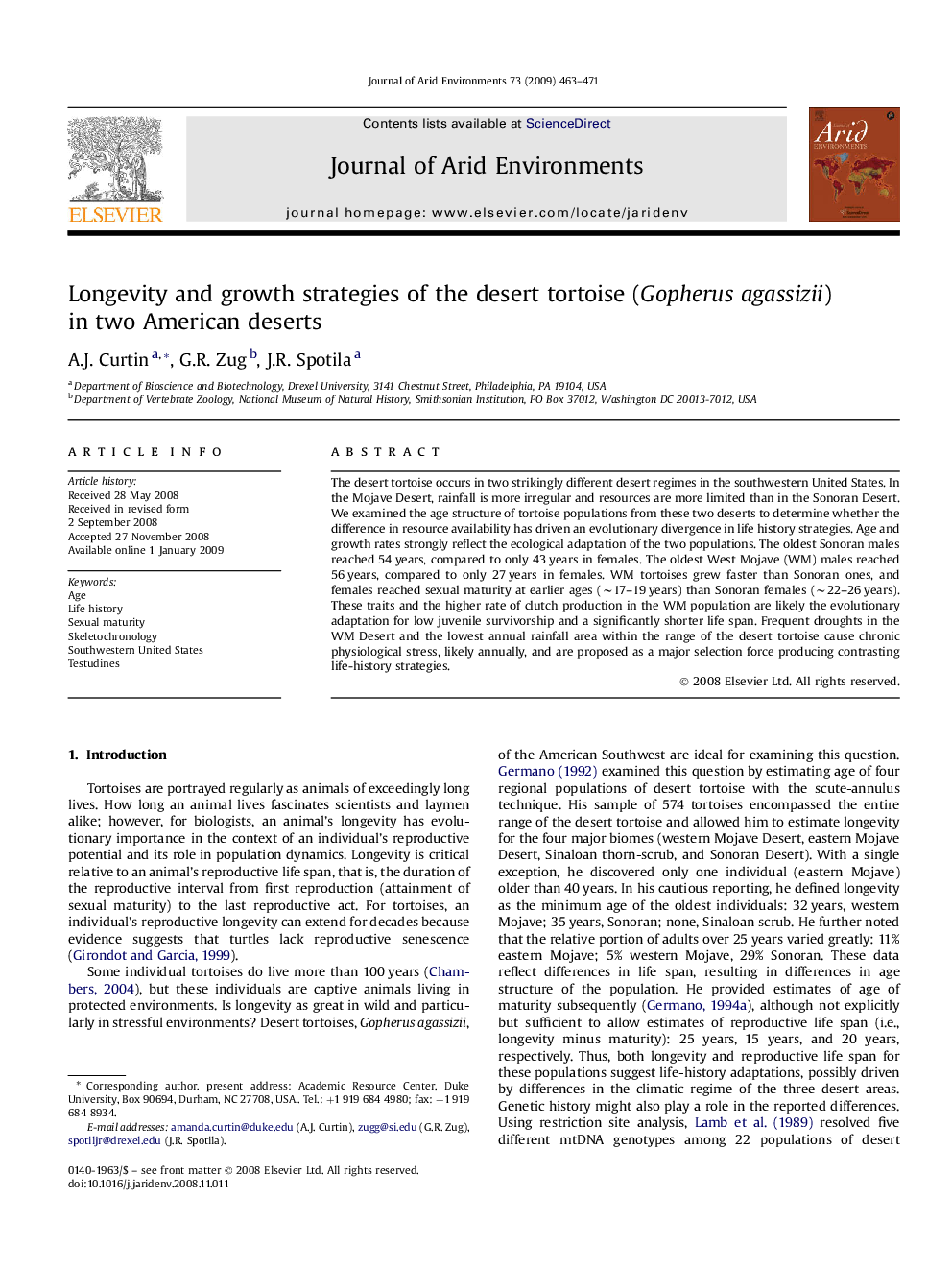| Article ID | Journal | Published Year | Pages | File Type |
|---|---|---|---|---|
| 4393952 | Journal of Arid Environments | 2009 | 9 Pages |
The desert tortoise occurs in two strikingly different desert regimes in the southwestern United States. In the Mojave Desert, rainfall is more irregular and resources are more limited than in the Sonoran Desert. We examined the age structure of tortoise populations from these two deserts to determine whether the difference in resource availability has driven an evolutionary divergence in life history strategies. Age and growth rates strongly reflect the ecological adaptation of the two populations. The oldest Sonoran males reached 54 years, compared to only 43 years in females. The oldest West Mojave (WM) males reached 56 years, compared to only 27 years in females. WM tortoises grew faster than Sonoran ones, and females reached sexual maturity at earlier ages (∼17–19 years) than Sonoran females (∼22–26 years). These traits and the higher rate of clutch production in the WM population are likely the evolutionary adaptation for low juvenile survivorship and a significantly shorter life span. Frequent droughts in the WM Desert and the lowest annual rainfall area within the range of the desert tortoise cause chronic physiological stress, likely annually, and are proposed as a major selection force producing contrasting life-history strategies.
